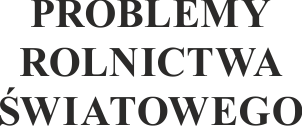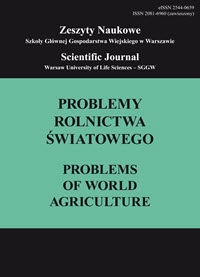Main Article Content
Article Details
Agence Bio (2017A). La bio change d’échelle en preservantsesfondamentaux!
Agence Bio (2017B). Le marche de la bio en France (2017). Accessed 15 September 2017 from: http://www.agencebio.org/le-marche-de-la-bio-en-france.
Agence Bio/CSA (2015). Baromètre de consommation et de perception des produitsbiologiques en France.12ème édition – 1ère chase, S.20.
Brodzicki, T., Szultka, S. (2002). Koncepcja klastrów a konkurencyjność przedsiębiorstw. Organizacja i kierowanie, 4(110), 45-60.
Developing European Inter-Cluster Alliance for organic agriculture. Biofach 2012. Accessed 10 April 2017 from: https://www.feedingknowledge.net.
Duczmala, W., Potwory, W. (eds.) (2010). Klastry i inicjatywy klastrowe w województwie opolskim. Wyższa Szkoła Zarządzania i Administracji w Opolu, Wydawnictwo Instytut Śląski, Opole.
European Observatory of Clusters. Accessed 24 April 2017 from: http://www.clusterobservatory.eu/
Figiel, S., Kuberska, D., Kufel, J. (2014). Modelowanie rozwoju klastrów rolno-żywnościowych w Polsce. IERiGŻ, Warszawa.
Innovation Clusters in Europe: A statistical analysis and overview of current policy support. DG ENTERPRISE AND INDUSTRY REPORT. EUROPEAN COMMISSION ENTERPRISE AND INDUSTRY DIRECTORATE-GENERAL. Accessed 15 April 2017 from: http://www.central2013.eu/fileadmin/ user_upload/Downloads/Tools_Resources/Cluster.pdf.
Inter-Cluster Organics. Über das Projekt. Accessed 15 April 2017 from: http://www.organikkumeler.org/g/ AboutProject.aspx.
Kacprzak, E. (2014). Funkcjonowanie klastrów rolno-żywnościowych na ekologicznym rynku rolnym w Polsce. Rozwój Regionalny i Polityka Regionalna, 26, 119-133. (Crossref)
Loda, M. (2012). Benchmarking–nowoczesna koncepcja zarządzania organizacją. Zakład Zarządzania, Instytut Politechniczny, Państwowa Wyższa Szkoła Zawodowa im. S. Pigonia, Krosno.
Organic cluster (2017). Accessed 15 June 2017 from: http://www.organics-cluster.com.
Organics Cluster en Rhône-Alpes - Axe innovation. Accessed 10 March 2017 from: http://www.ineedra.org/ france/DT1185557166/page/Le-Cluster-Organics.html.
Pilarska, C. (2013). Identyfikacja struktur klastrowych oraz efekty ich funkcjonowania w Unii Europejskiej. Studia Ekonomiczne, 156, 137-155.
Pilarska, C. (2010). Polityka oparta na klastrach w wybranych krajach Unii Europejskiej. Zeszyty Naukowe Polskie Towarzystwo Ekonomiczne Kraków, 8, 89-118.
Plawgo, B., Klimczuk, M. (2009). Przesłanki rozwoju klastrów w sektorach tradycyjnych. In: M. Juchniewicz (ed.) Czynniki i źródła przewagi konkurencyjnej. Wyd. UWM Olsztyn,
Porter, M.E. (2001). O konkurencji. Polskie Wydawnictwo Ekonomiczne Warszawa.
Prus, P. (2006). Opinie rolników na temat współpracy w ramach grup producentów rolnych. Roczniki Naukowe SERiA, 8(1), 150-153.
Prus, P. (2008). Rola grup producenckich w podnoszeniu konkurencyjności gospodarstw rolniczych. Roczniki Naukowe SERiA, 10(3), 456-461.
Rozporządznie Rady (WE) nr 834/2007 w sprawie produkcji ekologicznej i znakowania produktów ekologicznych i uchylające rozporządzenie (EWG) nr 2092/91 (Dz. Urz. UE L 189 z 20.07.2007 r. ze zm.).
Willer, H., Lernoud, J. (2017). The World of organic agriculture. Statistics and Emergeing. FiBL ans IFOAN – Organics International.
Zuba, M. (2012). Szanse i bariery w integracji łańcucha żywności ekologicznej w Polsce. Zeszyty Naukowe WSEI seria Ekonomia, 3, 261-288.
Downloads

Utwór dostępny jest na licencji Creative Commons Uznanie autorstwa – Użycie niekomercyjne 4.0 Międzynarodowe.





